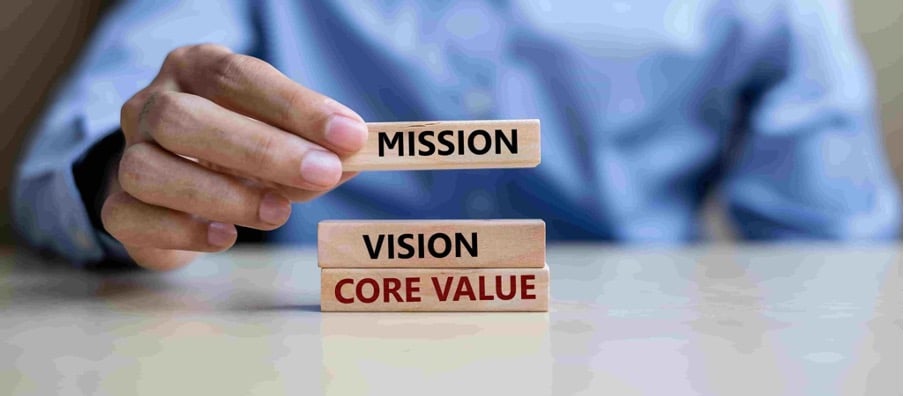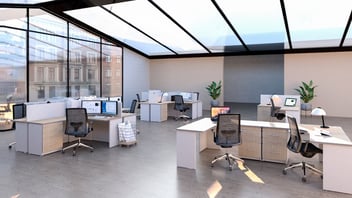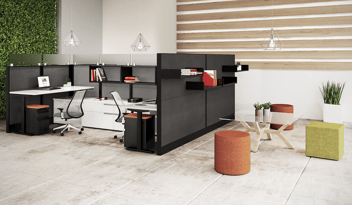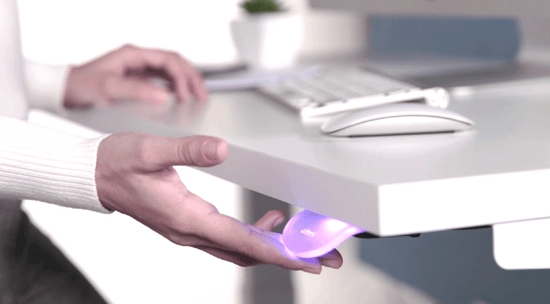Reinforcing company core values through office design
Every organization, whether a recent startup or a multinational business conglomerate, geared for success has a set of values, principles, and philosophies accompanying its mission statement. These are the company's core values. From integrity to state-of-the-art innovation, corporate values can be diverse.
But why should your organization have center values? It’s this set of beliefs and philosophies that determine your company’s culture and direct your business strategies. They influence team building and cohesion in your enterprise. Besides, they impact relationships with customers, stakeholders, and other businesses.
Implementation and reinforcement of company core values take different approaches each having its level of results.
Some organizations focus on managers leading by example and rewarding value-oriented behaviors while others incorporate their company values in the sales and hiring processes. However, the value of office design in reinforcing corporate values is often underestimated.
Office design to reinforce values, how does it work?
In this modern era, companies and institutions dedicate a huge chunk of their resources to fueling innovation-driven operations while paying minimum attention to office design. The office plan a company adopts reflects its culture and can be either a stepping-stone or an obstacle to achieving its mission.
Whether an organization’s culture is hierarchical and controlling or diverse and inclusive, it can be demonstrated by the office design idea adopted.
For instance, enclosed individual working spaces with high barriers in form of cubicles that do not allow direct communication with other employees depict and promote a control culture in an office. With this design, the focus is on doing things right.

An office design with group working areas and fewer individual spaces on the other hand demonstrates a collaborative culture in an organization. The outcome of such a less formal setting is long-lasting workforce development and enhanced teamwork.
For companies that aim at gaining a competitive advantage over other businesses through the development of creative culture, an easy-to-change working environment with fewer enclosed individual spaces and more open spaces is critical.
To promote a competitive culture in which the work dynamics are result-oriented; the organization should use a design that mixes formal and informal spaces. This supports working with maximum concentration while enhancing sharing of solutions more openly and rapidly in different instances.
Steps to achieve an inspirational office design
Functionality and engagement are primary considerations in the designing of any corporate space. But leveraging office design to build brand identity and emphasize company core values is a unique opportunity explored by few.
Due to the level of expertise required in developing a functional office plan, seeking the services of a professional interior designer is highly recommended. Here are some of the questions you should ask when considering a corporate office re/design.
Now, to implement an office design that reflects your organization’s culture, start by:
Making a list of your values
This is a no-brainer and simply involves making all your company values visible and tangible through a list in which you can order their priority. It is a vital step in utilizing corporate design to drive your company's core values.
Such a list helps you focus on principles that are critical to the achievement of the company’s goals and make decisions much faster. Employers and employees alike can be stimulated to translate the written code to visible practices in the organization by just having the list.
Noteworthy, an outline of values in the office also communicates to customers, to a certain degree, your organization’s commitment to particular principles.

Find a layout that fits your team and its needs
Considering your team, the activities they perform every day, and their particular needs, choose an office layout that is comfortable for everyone. The layout influences how both workers and customers perceive your organization's core values.
An open workspace promotes communication and collaboration making it ideal for companies that focus on innovation.
Although the open office layout is growing in popularity, it does not fit all businesses. For instance, a security-based company that hinges on privacy and confidentiality will require more enclosed working areas than open spaces. The layout therefore must be customized to the precise needs of the organization.
Choose furniture that goes accordingly
Buy furniture that not only reflects your corporate identity in colors and style, but that is truly functional and of high quality. The furniture and arrangement at the reception area give the first impression of your company.
A comfortable couch and a table whose colors and design reflect your business’ values go a long way in granting customers satisfaction in the quality of services offered.
The type of furniture in the conference rooms, break-out rooms, and working areas also affects the productivity of workers as it illustrates the organization's commitment to the welfare of its employees. For a detailed illustration, check out this article on designing a layout for office furniture.
Listen to your employees
Let your team have a say in the office design and what they want to see since they will be the ones to enjoy it every day. Listening to the workers and customizing the office space according to their needs gives them a sense of belonging and empowers them to actively participate in realizing the company’s values.
Why office design is so important: a gateway to innovation
The current innovations we see in big companies and institutions stem from the collaborative office design adopted by these organizations. The results are not just an outcome random corporate design but a well-thought layout executed by the owners and various stakeholders. Hence, the importance of office design.
Adaptable design with movable furniture and comfortable working areas is one of the strategies these organizations employ in designing their offices.





